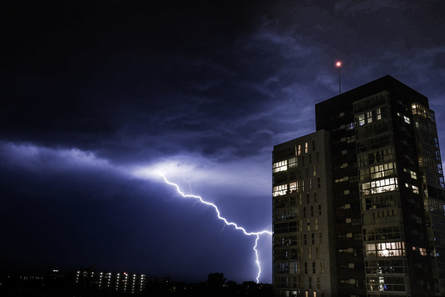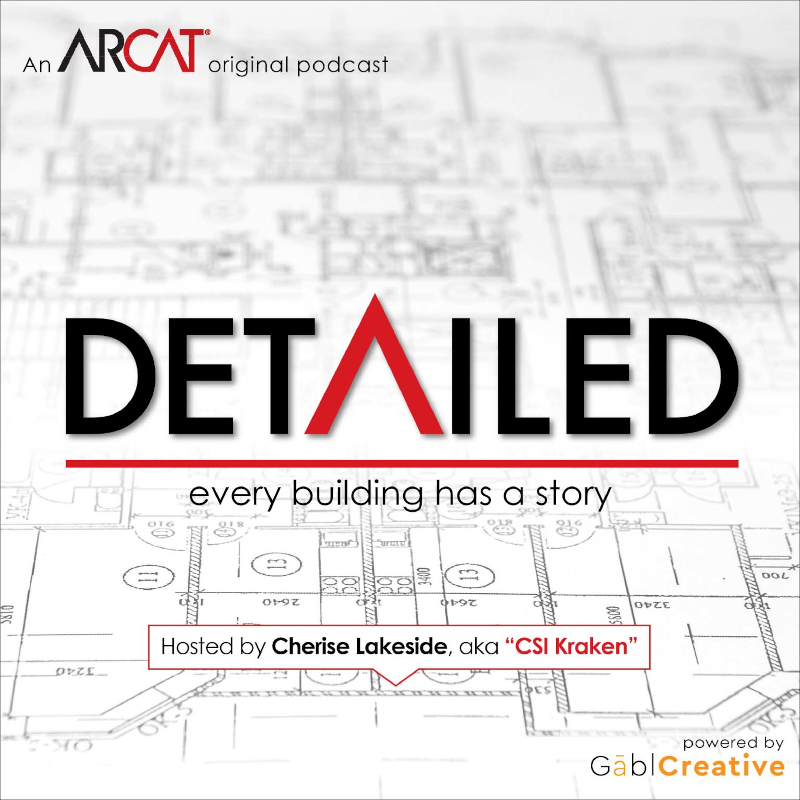|
Contributed by Roy Schauffele The air barrier technology used in today’s construction and mandated by the International Energy Conservation Code (IECC) are firmly grounded in science. That database of knowledge continues to grow at an astounding rate. Research efforts by the Air Barrier Association of America (ABAA) will be presented at the ABAA Conference in 2019, and you will be astounded by how much research and testing that ABAA has been conducting to ensure better knowledge for all.
Currently, air barrier systems are being marketed with having passed only the air barrier part of the testing (ASTM E2357 - Standard Test Method for Determining Air Leakage of Air Barrier Assemblies) and pay little to no attention to the other architectural performance attributes, such as crack bridging, water resistance, adhesion to a substrate and fastener sealability, which when successfully passed, results in an ABAA Evaluated Assembly. So, what I’m asking you to consider is an upgrade of performance requirements for a better and stronger air barrier specification. Here are my suggestions for ensuring the best possible air barrier performance for your project:
Performance requirements for a proper air barrier specification are vital. The above are four of my suggestions as how you can elevate and upgrade your specs. Should you have any questions or comments, I appreciate you commenting below. Thank you for reading.
12 Comments
MARTIN HOUSTON
9/11/2018 10:19:58 am
I would agree that there are merits to requirements 3 and 4. But I take strong issue with items 1 and 2. We have constructed some of the most air tight buildings that our testing agencies have seen, and we have done it without ABAA evaluated assemblies and with non ABAA certified installers. To point #1, an assembly is an assembly. The real performance comes from where one connects assemblies, not in the assemblies itself. And whole building air tightness relies largely on the mechanical system approach- which is to say- duct leakage matters! And as to having ABAA certified installers, how about instead creating simple repeatable details that anyone can build- even trades who don't even know what an air barrier is? After all, the roofer, AB installer, MEP trades, concrete subs among others all contribute to air tightness. And none of those, except for the AB installer would be certified by ABAA.
Reply
Roy Schauffele
9/11/2018 11:10:58 am
Thank you for reading the article and for your comments.
Reply
Martin Houston
10/3/2018 02:24:01 pm
Roy- this post has generated good discussion. Do you mind if I reference this at Construct? I think there are some good points that would be of value to the larger group at Construct. Thanks for prompting a thoughtful discussion!
Roy Schauffele
10/3/2018 02:55:08 pm
Martin, I'm very complimented that you wish to use my work and as fellow CSIer, please feel free to use the article. Deeply appreciate your professionalism
Cherise Lakeside
9/11/2018 11:41:20 am
Hey stranger! Nice to know you read our blogs and THANK YOU for sharing your expertise and knowledge, which I happen to know is considerable. Looking forward to seeing you at CONSTRUCT!
Reply
9/12/2018 03:20:31 am
I agree with your comments above. It may be worth noting that the membrane itself when installed as part of an assembly with non-combustible substrate, insulation and cladding materials will not trigger NFPA 285. Example- CMU back-up, mineral wool insulation and brick veneer. Hope to see you all at CONSTRUCT 2018!
Reply
9/14/2018 10:58:37 am
Hi Martin, I wanted to respond with a few comments on this. It is nice to see someone that is able to achieve high levels of airtight building and obviously you do good work to accomplish this. The only problem is that nationwide, there continues to be struggles with installation and a lot of education still needed.
Reply
9/13/2018 03:41:44 pm
I have to agree with Martin. Suggestions 3 & 4 are fantastic and should be included in every project, but the specifications about the ABAA are not as helpful. My company is an installer of Air and Vapor Barriers, as well as wall-cladding systems overtop of them, and there is truly a gaping loophole when combining these two installers.
Reply
Roy Schauffele
9/14/2018 06:48:15 am
Cory, I do agree with you and as an Industry Group ABAA is working on a variety of these and other items. One thing most people don't realize is that the bulk of ABAA membership is contractors, not manufacturers, a very different group.
Reply
9/14/2018 09:17:31 am
This is good information, and I appreciate that. I am on my way to sign up for that now. I also just checked out your website, and I look forward to speaking to you in person at CONSTRUCT. Or, heck, whenever you have a free minute. 9/14/2018 11:09:31 am
Hi Corey,
Reply
8/8/2023 10:07:59 am
As discussed in the past, what you suggest is great
Reply
Leave a Reply. |
AboutLet's Fix Construction is an avenue to offer creative solutions, separate myths from facts and erase misconceptions about the architecture, engineering and construction (AEC) industry. Check out Cherise's latest podcast
Get blog post notifications hereArchives
March 2022
Categories
All
|


 RSS Feed
RSS Feed
